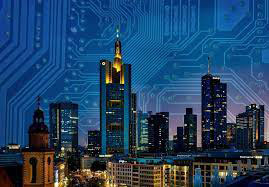As cities evolve into smart cities, leveraging technology to improve efficiency and enhance the quality of life for residents becomes paramount. One technology that is increasingly gaining traction in this transformation is Active RFID (Radio Frequency Identification). Active RFID offers a range of applications that can significantly contribute to the smart city ecosystem.
Before delving into its applications in smart cities, let's first understand what Active RFID entails. Active RFID technology employs battery-powered tags or transponders to transmit data wirelessly. Unlike passive RFID, which relies on the reader's electromagnetic field, active RFID tags have their own power source, enabling them to broadcast signals over longer distances. This extended range makes them ideal for tracking and monitoring objects, assets, and people in dynamic urban environments.
Enhancing Urban Mobility:
Active RFID plays a crucial role in improving urban mobility within smart cities. By integrating active RFID tags into public transportation systems, city administrators can effectively manage vehicle fleets, optimize routes, and ensure timely maintenance. Commuters can also benefit from real-time information on bus or train arrivals, reducing wait times and improving the overall transportation experience. Furthermore, active RFID can be utilized in parking management, enabling drivers to quickly locate available parking spaces and reducing traffic congestion.
Efficient Waste Management:
Smart waste management is essential for maintaining cleanliness and sustainability in urban areas. Active RFID technology enables the monitoring and tracking of waste containers, allowing authorities to optimize collection routes, reduce operational costs, and minimize overflowing bins. By using active RFID tags on waste bins, garbage trucks can be automatically alerted when bins are full, optimizing collection schedules and reducing unnecessary trips. This not only improves efficiency but also contributes to reducing fuel consumption and greenhouse gas emissions.

Enhancing Safety and Security:
Active RFID plays a crucial role in enhancing safety and security within smart cities. By integrating active RFID tags into streetlights, surveillance cameras, and other urban infrastructure, authorities can monitor and track assets in real-time. This enables proactive maintenance, timely response to faults or malfunctions, and improves overall public safety. Additionally, active RFID can be utilized for access control, ensuring authorized personnel have seamless entry to restricted areas while deterring unauthorized access.
Environmental Monitoring and Resource Optimization:
Active RFID technology can assist in environmental monitoring and resource optimization within smart cities. By deploying active RFID tags on utility meters, such as water and electricity, cities can collect accurate and real-time consumption data. This information enables authorities and residents to identify areas of high consumption and implement measures to conserve resources effectively. Moreover, active RFID can be utilized in monitoring air quality, noise levels, and other environmental parameters, facilitating data-driven decision-making to improve the overall livability of the city.
Active RFID technology is revolutionizing the way smart cities operate, offering numerous benefits across various domains. From enhancing urban mobility and improving waste management to ensuring safety and optimizing resource utilization, active RFID is proving to be a valuable tool for city administrators. As the development of smart cities continues, the integration of active RFID will play a pivotal role in driving efficiency, sustainability, and the overall well-being of urban residents. Embracing this technology opens doors to a more connected and intelligent urban future.